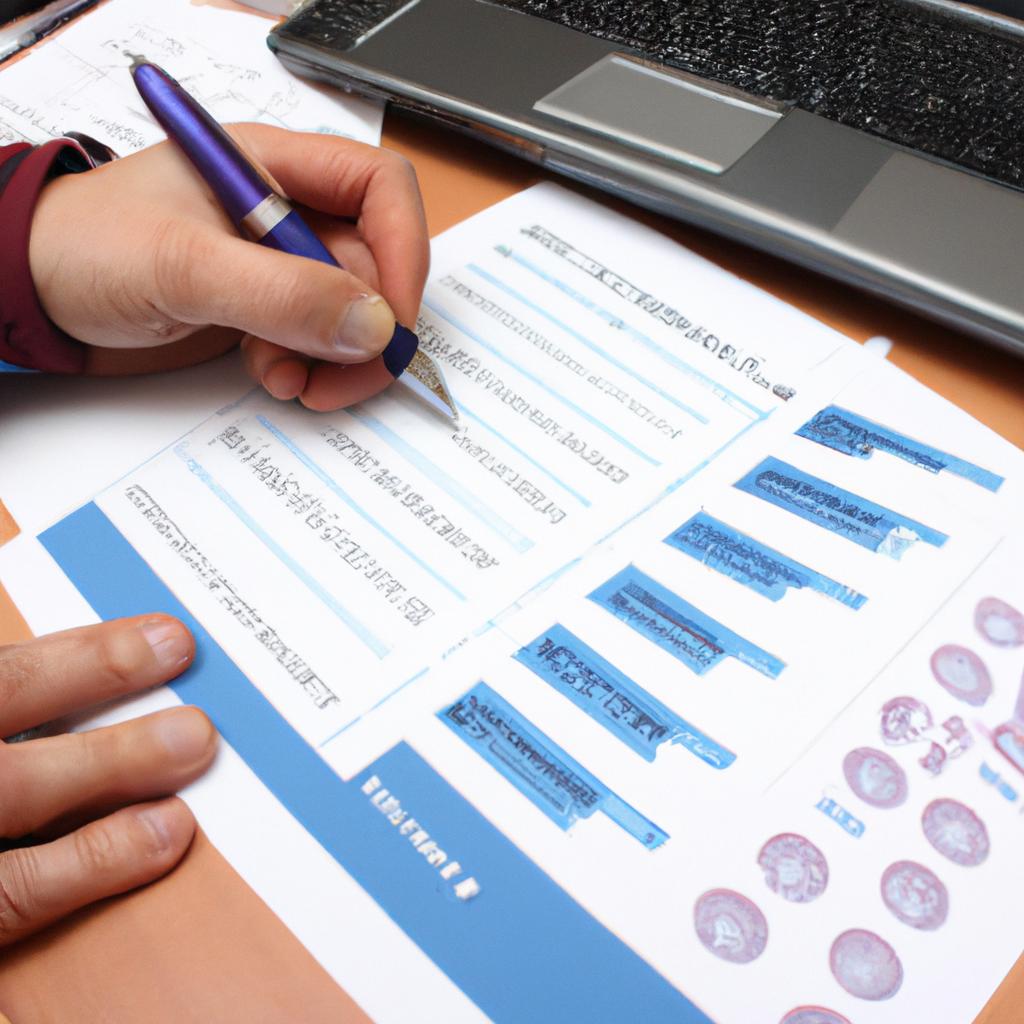Insurance Coverage: Body Myositis and Medical Finance

The field of medical finance is a complex and challenging area, particularly when it comes to insurance coverage for specific conditions. One such condition that poses unique challenges in terms of obtaining appropriate insurance coverage is body myositis. Body myositis refers to a rare autoimmune disease characterized by chronic muscle inflammation, leading to weakness and disability. In this article, we will explore the various aspects of insurance coverage related to body myositis and delve into the complexities surrounding medical finance.
To illustrate the importance of understanding insurance coverage for body myositis, consider the hypothetical case study of Sarah, a 45-year-old woman diagnosed with this debilitating condition. Despite having comprehensive health insurance, Sarah finds herself struggling to access necessary treatments and therapies due to limitations imposed by her insurer. This scenario highlights the critical need for individuals suffering from body myositis to navigate through intricate policies and regulations governing insurance coverage in order to obtain adequate financial support for their medical needs. By examining the intricacies of insurance coverage pertaining specifically to body myositis, we can shed light on potential barriers faced by patients like Sarah and explore strategies for overcoming these obstacles within the realm of medical finance.
Understanding Body Myositis
Body myositis is a rare autoimmune disease characterized by the inflammation and weakening of muscles, resulting in muscle weakness, pain, and fatigue. This condition typically affects adults over the age of 50 but can occur at any age. To illustrate the impact of body myositis, let’s consider the case of John, a 55-year-old man diagnosed with this debilitating condition.
John was an active individual who enjoyed playing tennis and going on long hikes. However, he started experiencing gradual muscle weakness in his arms and legs, making it increasingly difficult for him to engage in these activities. As his symptoms worsened over time, he sought medical attention and received a diagnosis of body myositis.
Living with body myositis can be incredibly challenging both physically and emotionally. Individuals with this condition often face daily struggles that affect their quality of life. Here are some key emotional aspects that individuals with body myositis may experience:
- Frustration: Coping with limitations in physical abilities can lead to frustration as simple tasks become more arduous.
- Depression: The chronic pain and reduced mobility associated with body myositis may contribute to feelings of sadness or depression.
- Anxiety: Uncertainty about future health outcomes and dependence on others for assistance can cause anxiety.
- Isolation: Limited mobility may result in social isolation as individuals find it harder to participate in regular social activities.
To further understand the impact of body myositis, refer to the following table illustrating common challenges faced by individuals affected by this disease:
| Challenges | Physical | Emotional | Financial |
|---|---|---|---|
| Muscle Weakness | Difficulty performing everyday tasks | Frustration | Medical expenses |
| Fatigue | Lack of energy | Depression | Loss of income |
| Pain | Discomfort or soreness in muscles | Anxiety | Cost of specialized equipment |
| Reduced Mobility | Limited movement capabilities | Isolation | Home modifications |
Recognizing the emotional and financial impact that body myositis can have is crucial when considering insurance coverage options.
Types of Insurance Coverage for Body Myositis
[Transition sentence] Understanding the challenges faced by individuals with body myositis highlights the need for appropriate insurance coverage to mitigate these difficulties.
Types of Insurance Coverage for Body Myositis
Understanding Body Myositis is crucial for individuals affected by this inflammatory muscle disease. Now, let’s delve into the various types of insurance coverage available specifically for body myositis patients. To illustrate how insurance coverage can impact an individual’s medical finance, consider the case study of Sarah.
Sarah, a 45-year-old woman diagnosed with body myositis, relies heavily on insurance coverage to manage her medical expenses. Without proper coverage, she would face significant financial burdens and limited access to necessary treatments and therapies. Understanding the different types of insurance coverage options available can help individuals like Sarah make informed decisions about their healthcare.
Insurance Coverage for Body Myositis can vary depending on factors such as geographical location and specific insurance plans offered. Here are some key points to consider when evaluating insurance options:
- In-Network Providers: Many insurance plans have networks of preferred providers who offer discounted rates for services covered by the plan. It is essential to ensure that specialists knowledgeable in treating body myositis are included in these provider networks.
- Prescription Medication Coverage: Given the importance of medication management in controlling symptoms and slowing disease progression, having comprehensive prescription drug coverage is vital. This includes ensuring that both generic and brand-name medications used to treat body myositis are covered under the plan.
- Rehabilitation Services: Physical therapy, occupational therapy, and other rehabilitative services play a crucial role in helping body myositis patients maintain functionality and improve quality of life. Adequate coverage for these services should be considered when selecting an insurance plan.
- Access to Clinical Trials: Participation in clinical trials can provide individuals with cutting-edge treatment options not yet widely available. Insurance plans that cover participation in approved clinical trials enhance opportunities for innovative treatments.
To further emphasize the significance of appropriate insurance coverage, refer to the table below illustrating two hypothetical scenarios:
| Scenario | Insurance Plan A | Insurance Plan B |
|---|---|---|
| Premium Costs | High | Low |
| Provider Network | Limited coverage for specialists knowledgeable in body myositis | Extensive network including specialist providers |
| Medication Coverage | Generic medications covered, limited brand-name coverage | Comprehensive coverage for both generic and brand-name medications |
| Rehabilitation Services | Partial coverage for physical therapy and occupational therapy | Full coverage for all rehabilitative services |
As evident from the table above, Insurance Plan B provides more comprehensive coverage compared to Insurance Plan A. This highlights the importance of carefully evaluating insurance plans to ensure optimal financial support and access to necessary medical treatments.
In considering insurance options for body myositis, it is crucial to understand that each individual’s needs may vary. Evaluating insurance plans based on factors such as provider networks, medication coverage, rehabilitation services, and clinical trial accessibility can significantly impact an individual’s ability to effectively manage their condition. In the subsequent section about “Evaluating Insurance Plans for Body Myositis,” we will explore a step-by-step approach to assist individuals in making informed decisions regarding insurance coverage.
Evaluating Insurance Plans for Body Myositis
Transition from previous section:
Having explored the different types of insurance coverage available for body myositis, it is now crucial to evaluate these plans in order to determine their suitability. By understanding the key factors involved in evaluating insurance plans, individuals can make informed decisions regarding their medical finance and ensure comprehensive coverage for body myositis.
Evaluating Insurance Plans for Body Myositis
To illustrate the process of evaluating insurance plans, let us consider a hypothetical case study involving Sarah, a 45-year-old individual diagnosed with body myositis. Sarah has been advised by her healthcare provider to undergo regular physical therapy sessions and take medications to manage her condition effectively. With this context in mind, we can examine several important considerations when assessing insurance plans for body myositis:
-
Coverage Limitations: It is essential to review any limitations placed on coverage for body myositis treatments such as physical therapy or specialized medications. Certain policies may have restrictions on the number of therapy sessions covered or require prior authorization before certain medications are approved.
-
Network Providers: Evaluating the network of healthcare providers within an insurance plan is vital. Ensure that your preferred specialists, therapists, and pharmacies are included in the plan’s network to avoid additional out-of-pocket expenses.
-
Out-of-Pocket Costs: Understanding the financial responsibilities associated with an insurance plan is paramount. Review deductibles, copayments, and coinsurance rates specific to body myositis treatments to gauge potential costs beyond monthly premiums.
-
Prescription Drug Coverage: Consider how prescription drug coverage aligns with your medication needs for managing body myositis symptoms. Assess if medications prescribed by your physician are covered under the plan’s formulary list and what cost-sharing arrangements exist.
Taking into account these considerations will help individuals like Sarah navigate through various insurance options better suited for managing their body myositis condition effectively.
| Types of Evaluation Criteria | Insurance Plan A | Insurance Plan B | Insurance Plan C |
|---|---|---|---|
| Coverage Limitations | Limited coverage for physical therapy sessions; prior authorization required for certain medications. | Comprehensive coverage with no limitations on therapy sessions or medication authorizations. | Moderate coverage, with some restrictions on therapy sessions and limited medication formulary list. |
| Network Providers | Preferred specialists, therapists, and pharmacies are part of the network. | Limited selection of specialists within the network; preferred therapists not included in-network providers. | Only a few participating pharmacies available within the network. |
| Out-of-Pocket Costs | Low deductibles and copayments for body myositis treatments. | High deductible but low coinsurance rates for therapies and medications related to body myositis. | Moderate deductibles, copayments, and coinsurance rates that may increase overall expenses over time. |
Evaluating insurance plans based on these criteria will assist individuals like Sarah in making informed decisions about their medical finance while ensuring comprehensive coverage for body myositis.
Transition into subsequent section:
Although evaluating insurance plans is crucial, it is important to recognize the common challenges faced by individuals seeking insurance coverage for body myositis treatment. By understanding these hurdles, we can explore effective strategies to overcome them and secure adequate support for managing this condition effectively.
Common Challenges in Obtaining Insurance Coverage
Section H2: Common Challenges in Obtaining Insurance Coverage
Transitioning from the previous section on evaluating insurance plans for body myositis, it is important to acknowledge the common challenges individuals face when attempting to obtain insurance coverage. These challenges can significantly impact a patient’s ability to access necessary healthcare services and treatments.
One example of such a challenge is the issue of pre-existing conditions. Many insurance providers may impose limitations or exclusions on coverage for pre-existing conditions like body myositis. This can lead to higher premiums or even denial of coverage altogether, leaving patients with limited options for financial assistance.
- Limited availability of specialized medical facilities that accept certain insurance plans.
- High out-of-pocket expenses associated with medications and therapies for body myositis.
- Complex administrative processes involved in obtaining prior authorization for specific treatments.
- Inadequate coverage for assistive devices or home modifications required by individuals with body myositis.
To delve deeper into this topic, let us examine a three-column table showcasing different scenarios faced by patients seeking insurance coverage:
| Scenario | Patient A | Patient B | Patient C |
|---|---|---|---|
| Pre-existing condition | Denied coverage | Higher premium | Partially covered |
| Specialized facility | No nearby options | Accepts preferred plan | Out-of-network charges |
| Medication expenses | Not fully covered | Affordable copayments | Expensive deductible |
As depicted above, there are various barriers that patients encounter while navigating insurance systems when dealing with body myositis. It is imperative to address these obstacles to ensure adequate access to needed care and support.
In conclusion, understanding the common challenges associated with obtaining insurance coverage for body myositis highlights the need for advocacy and education surrounding this disease. By recognizing these barriers, we can work towards improving the accessibility and affordability of healthcare for individuals living with body myositis.
Transitioning into the subsequent section on “Tips for Managing Medical Expenses with Body Myositis,” it is crucial to explore strategies that can help alleviate the financial burden often experienced by patients.
Tips for Managing Medical Expenses with Body Myositis
Transitioning from the challenges faced in obtaining insurance coverage, it is crucial to explore strategies that can help improve access to adequate medical finance for individuals with body myositis. To illustrate this, consider the case of Sarah, a 45-year-old woman diagnosed with body myositis who encountered difficulties securing comprehensive insurance coverage.
Sarah’s journey highlights some common challenges and serves as a starting point to discuss effective approaches in navigating these obstacles. By implementing the following strategies, individuals like Sarah may increase their chances of obtaining suitable insurance coverage:
-
Review Policy Options:
- Assess different policies offered by various insurers.
- Compare coverage benefits, limitations, co-pays, and premiums.
- Seek expert advice or consult healthcare professionals familiar with body myositis-related expenses.
-
Document Medical Necessity:
- Maintain thorough documentation regarding diagnosis, treatments, and related costs.
- Provide detailed medical reports from specialists emphasizing the necessity of specific services or medications.
- Include records of failed alternative treatments if applicable.
-
Advocate for Prior Authorization:
- Work closely with healthcare providers to submit prior authorization requests.
- Clearly articulate why certain treatments or medications are necessary based on individual circumstances.
- Highlight potential cost savings resulting from approved interventions compared to long-term complications without them.
-
Appeal Denied Claims:
Denial Reason Action Required Lack of Documentation Submit missing documents promptly Experimental Treatment Exclusion Gather supporting evidence from reputable sources Pre-existing Condition Clause Present additional medical information indicating changes since policy inception
The emotional toll experienced by those struggling to obtain sufficient insurance coverage cannot be understated. The constant worry about mounting financial burdens combined with physical challenges adds further stress to an already difficult situation. However, by implementing the strategies mentioned above, individuals like Sarah can increase their chances of securing the necessary coverage and financial support.
In the subsequent section, we will explore alternative financial assistance options that can complement insurance coverage for managing medical expenses associated with body myositis. By considering these additional resources, individuals may find further relief from the burden of healthcare costs while ensuring comprehensive care.
Exploring Alternative Financial Assistance Options
Transitioning from the previous section on managing medical expenses with Body Myositis, it is crucial to explore alternative financial assistance options that can alleviate the burden of this condition. By widening our scope beyond traditional insurance coverage, individuals affected by Body Myositis may discover additional avenues for support and relief.
To illustrate the potential impact of exploring alternative financial assistance options, let us consider a hypothetical case study. Sarah is a 40-year-old woman diagnosed with Body Myositis who has been struggling to manage her medical expenses alongside her regular bills. Despite having comprehensive health insurance, she still faces significant out-of-pocket costs for treatments, medications, and specialized care. In search of additional assistance, Sarah embarks on a journey to uncover alternative resources available to help ease the financial strain associated with her condition.
When delving into these alternative options, several key considerations emerge:
-
Charitable Organizations:
- Many non-profit organizations provide financial aid specifically targeted towards assisting individuals with rare diseases like Body Myositis.
- These organizations offer various forms of support such as direct grants or assistance with specific medical expenses.
- Connecting with these charitable entities can potentially unlock valuable resources for those in need.
-
Clinical Trials and Research Studies:
- Participating in clinical trials or research studies not only contributes to advancements in treatment but also often provides access to cutting-edge therapies at reduced or no cost.
- While participation may entail certain risks and time commitments, it offers an opportunity to receive high-quality care without shouldering excessive financial burdens.
-
Government Programs:
- Exploring government programs tailored towards supporting individuals facing chronic illnesses is essential.
- Medicaid waivers or disability benefits are some examples of initiatives that might be available depending on one’s circumstances and eligibility criteria.
-
Crowdfunding Platforms:
- Utilizing crowdfunding platforms can empower individuals impacted by Body Myositis to reach out to their communities for financial support.
- Such platforms enable individuals to share their stories, engage sympathizers, and gather donations that can contribute significantly towards medical expenses.
By exploring these alternative financial assistance options, individuals affected by Body Myositis may find additional avenues of support beyond conventional insurance coverage. From charitable organizations providing grants to participation in clinical trials or government programs tailored to chronic illnesses, various possibilities exist. Additionally, crowdfunding platforms have emerged as a powerful tool for community-based fundraising efforts. Remember, understanding and leveraging these alternatives can play a crucial role in mitigating the burden associated with Body Myositis and its accompanying medical costs.






